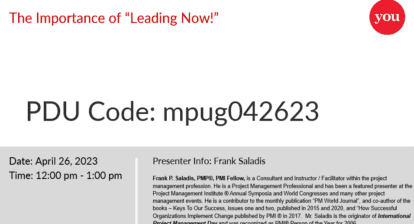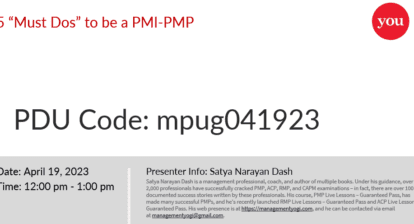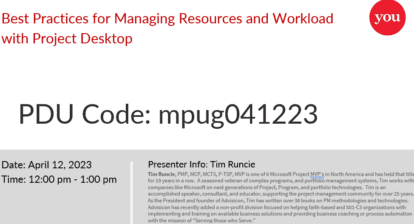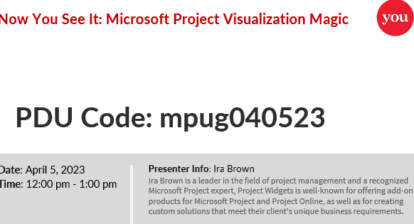Portfolio management experts Dr Shan Rajegopal and Rich Weller discuss the essential skills which every practitioner needs.
What does it take to be a successful portfolio manager?
For Pcubed experts Dr. Shan Rajegopal and Rich Weller, the best portfolio managers bring together a dynamic mix of experience, people skills, the discipline to implement the right processes, and a fundamental ability to deploy the best possible tools for the task in hand.
Together the pair has nearly thirty years of experience as practitioners in portfolio management. Weller came to the discipline from an entrepreneurial background and had already built and sold a number of companies before joining Pcubed North America. Rajegopal has written a number of books on the subject, including Project Portfolio Management: Leading the Corporate Vision and worked with several leading global firms such as Jaguar Land-Rover, Deutsch Bank, Shell Upstream, and British Petroleum.
“The most basic requirement for a successful portfolio manager is to have program and portfolio experience,” Rajegopal explains. “You have to have the ability to think in terms of change management, as a whole process. You need the ability to communicate well, and especially the ability to coach and mentor the people involved. You need to be thinking can we provide them with a template, how easy is this for people to use?”
“Managing stakeholders is a key part of the skill-set. You need to be able to communicate effectively with major stakeholders you really need their buy in. You need to demonstrate credibility with your audience in the way you communicate and show how portfolio is a structured decision making process.”
“There’s a huge amount of decision making involved in being a portfolio manager. All the ideas and demand that comes in have to be prioritized and optimized based on constraints. The portfolio manager needs to think through the criteria, and decide if its aligned to the overall strategy.”
Likewise, for Rich Weller, the ability to keep the organizations strategic direction in the forefront of your mind is absolutely essential. “You have to know – where does that organization want to go? When it looks into the future, what does it want to have achieved?”
“These strategic objectives shouldn’t just come from a financial perspective, but the business as a whole. Where are we trying to move to? What are we trying to do internally to grow ourselves and our people?”
“We need to be able to ensure that as a portfolio manager I know about the potential projects coming in and I need to be able to assess each project against those objectives to ensure there is an alignment.”
Achieving that strategic focus enables a good portfolio manager to make sure the governance board is armed with the right objectives to ensure investment decisions are made in support of the organizations wider strategy.
“For example, if I was a portfolio manager at IBM we would have a whole bunch of potential projects coming in all over the place,” Weller continues. “People from all over the world are submitting their ideas. One of them could be to open a McDonalds franchise. Well we know McDonalds restaurants rarely fail, so its a good investment of money, but is it a good idea? No-obviously not: it’s not remotely in line with IBMs business strategy.”
To help facilitate the best possible investment decisions, a good portfolio manager needs to be supported by a rock solid grasp of the processes involved.
Firstly: the process of idea generation itself. “You need to make sure you capture all the new ideas and improvements which come in- knowing how to handle all that innovation and demand is an important part of being a portfolio manager,” says Rajegopal. “Then you need to use a framework to optimize the projects to ensure they’re all aligned with the organizations strategy.”
“You really need to understand the concept of optimization. We use the analytical hierarchy process in calculating the strategic value of the projects and this process also ensure the projects are aligned to the business strategy. Other main areas of concern in portfolio are the need to identify risks and constraints- both budget and resources that affect your portfolio. We have found Interdependencies between projects are often overlooked by companies. The Interdependency identification is extremely important. For example, if you have three projects supporting a large program and one of those projects is cut, the program can’t be delivered.”
Weller agrees that the ability to successfully optimize a portfolio in light of an organization’s strategic objectives is absolutely central. “You need to be able to take the list of projects and sequence them based on their strategic fit and given the current constraints in terms of dollars and resources,” he says. “There is always more work than we can achieve. We need to decide and sequence, put the projects in an order time-wise that is achievable – maybe we can only do a dozen this year, but then we could do another set next year.”
“Finally I would say you need to keep your finger on the pulse of the portfolio- at any time I want to be able to see what stage the project is in. What is the health of the portfolio? I need visibility into how the different projects are performing.”
It is this solid appreciation of the importance of benefits management which is another prerequisite for the job. “Once a project is being executed it is vitally important to track the benefits,” Rajegopal says.
“It’s a key component of the feedback loop. Projects are agreed on and invested in to deliver the benefits an organization wants. A lot of organizations are challenged by this – they have a brilliant business case initially but then after that no one is following up on the value. If they don’t put the right metric in place to track the benefits- it’s actually a lost investment – you need to know what value is being delivered to make a decision on it.”
Ease with the tools which enable clear visibility is the third piece of the jigsaw. Rajegopal says keeping track of the investment information should not be complicated – but “the problem is that it’s data driven. Many people just don’t think in that way, which leads them to shy away from taking ownership.”
“What are the basic tools you need? On a basic level, you can use Excel. But now with Microsoft Project…the tool enables best practice. After years of development between developers and users, it can deal with very complicated situations -you can prioritize, optimize, create multiple scenarios, for example if you have a $200 million budget, you can demonstrate how the portfolio would be affected differently if you had to cut it by 10% or 20%, and show which projects would be forced out depending on the level of cut. You need to be competent with a good tool to be able to present different scenarios which have a powerful impact on an organizations senior executives.”
And in terms of general character? There are just a few simple requirements…
As Weller puts it: “Portfolio managers are made of the same kind of material as C level executives. You need people management skills – and an advanced understanding of financial data.”
The sound judgment which is a fundamental attribute for a successful portfolio manager is summed up by what he describes as ‘that saying which has become old hat for people in the industry but is really a very important distinction:’
“Project management is about doing projects right. Portfolio management is about doing the right projects.”






